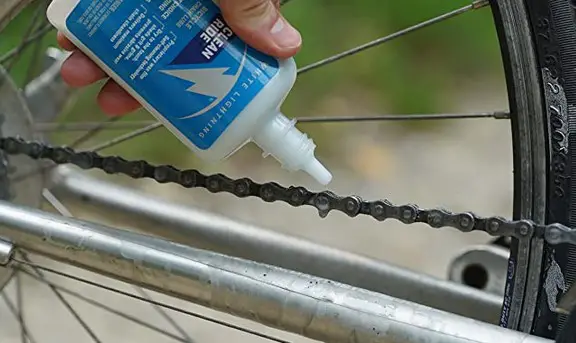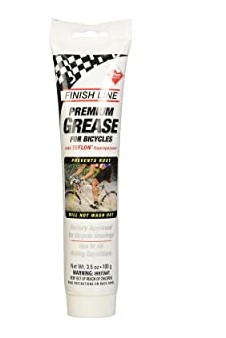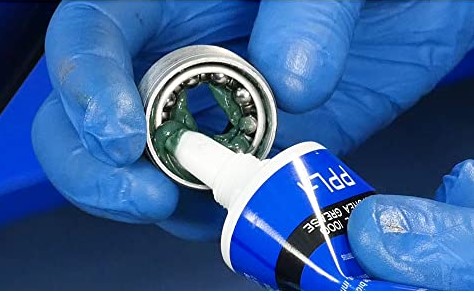It takes time and effort but greasing your bike parts is key to good performance and safer, more pleasant rides. With so many options on the market, what kind of grease should I use on my bike is a question many people ask.
You need a high-quality single multi-purpose or specific parts bike grease. Make sure it’s versatile, long-lasting, easy to apply, can withstand extreme temperatures and pressure, has a higher viscosity, and preferably additives. Additionally, a water-resistance grease builds a protective layer.
It’s essential to get the best grease for your bike because the performance of certain components is impaired if you use the wrong grease.

What Kind Of Grease Should I Use On My Bike?- Key Features
The following features are essential to ensure your grease does an excellent job of keeping your bike in good condition and offering top-notch performance.
1. Temperature stability
Grease that hardens when the temperatures are low and runs when high is wasteful and messy. Go for grease that stays stable in all temperatures, whether it is below 40 °F or higher than 120 °F.
2. Viscosity
You need grease that helps your bike’s mechanical parts move easily and keep them lubricated. With viscosity measured at a scale of 0 to 6, get a grease with a viscosity rating of 2, which will feel like smooth peanut butter.
3. Pressure Performance
Excessive pressure can make grease shear or shutter, which can occur when applying emergency brakes or shock loading. These conditions bring greased parts in contact, leading to corrosion.
EP greases with molybdenum disulfide or graphite perform exceptionally under pressure because it bonds to the metal surface, preventing contact in conditions of extreme pressure.
4. Water Resistance
The last thing that metals in constant contact with each other need is water because it can cause rust and make the parts fall apart. A water-resistant grease creates a protective film that protects these parts.
Other considerations include:
5. Versatility
You can find grease that you can use on different machinery besides your bicycle, which will save money and the hustle of buying a different grease for each piece of equipment.
6. Additives
Extra additives such as ceramic or copper powder in grease can better its performance at high temperatures and safeguard it from component damages. Glycerol additives help with tolerance to low temperatures.
7. Shelf Life
Before buying grease in bulk, consider how frequently you’ll use it. Once you determine that, pick a product that will remain viable throughout that period to avoid throwing it out before exhausting it.
8. Ease Of Application
Go for a grease designed with a tube that you can easily load into a grease gun or a spray applicator. If you go for a jar, ensure it is not too droopy or sticky.
What Is The Best Bicycle Bearing Grease?
The grease you buy for your bike’s bearings needs to offer good protection against corrosion, function at different temperatures, and be water and oxidation-resistant. It should also be compatible with rubber or plastic dusters, maintain the structure’s hardness and stability and be affordable.
It is essential to know the types of bearings on your bike to avoid using the wrong grease. For instance, ceramic bearings need high-performing ceramic-safe grease like Finish Line Ceramic Grease (View on Amazon) made with premium ingredients, is non-staining, and considerably lowers bearing and drivetrain friction. It’s non-staining, odorless, and ideal for carbon fiber bikes.

If you prefer biodegradable grease, go for White Lightning Crystal Grease Biodegradable (View on Amazon).
What Grease Can I Use On Bike Pedals?
Although bike pedals don’t typically need to be lubricated as frequently as other moving parts such as the chains, you still need to grease them every few months. The frequency depends on the distance you cover on your bike and how often you go biking.
You don’t necessarily have to use a bike pedal-specific grease because machinery grease, door grease, and car grease can work. However, I recommend going for a product designed for moving parts.
In addition, make sure you know the materials (aluminum, carbon fiber, titanium, steel, etc.) that make up your bike to ensure the grease you choose is compatible with it.
An excellent grease you can get for your bike pedals is Park Tool PolyLube 1000 Bicycle Grease (View on Amazon) . The polyurea synthetic grease with high-shear strength is specifically for bike repair and maintenance and repels moisture.
What Grease Should I Use For My Bottom Bracket?
A multi-purpose bike grease generally works for the bottom bracket. If your bike’s frame comprises titanium or mismatched materials that tend to bond or seize to each other, you should use anti-seize.
The grease shouldn’t be too thick to prevent excessive friction on the bearings, which will reduce the bike’s performance.
A great grease to use on your bottom bracket is Finish Line Premium Grease (earlier mentioned). It’s Made with Teflon Fluoropolymer-made and prevents distortion and wear in bottom brackets, hubs, and headsets, and can withstand high pressure without sheering.
Is Bike Lube The Same As Grease? (Bike Grease vs. Lube)
Grease is a type of lubricant, but contrary to the belief, lubricants and greases are not entirely the same. While all greases are lubricants, not every lube is grease.
Lubricants and grease are essential for proper bike maintenance and ensuring it runs smoothly. It is crucial to know when it’s best to use grease and when lube will work much better.
Grease mainly constitutes base oil (mineral, vegetable, or synthetic) and additives and is mainly used to lower friction. It is more suitable for pedal threads, headset cups, wheel bearings, and bottom brackets.
On the other hand, lubricants are available in three forms: all-form, dry, and wet. Dry lubes are best for dusty, dry conditions, while wet lubes are made to withstand muddy and wet conditions
All-form lubes are suitable for every weather condition, making them ideal for many situations and conditions. Lube is well-suited for brake level pivots, bike chains, ousting stuck components, and clearing out gear cables.

What Can I Use Instead Of Bike Grease?
You’ve probably seen people recommending vegetable oil, coconut oil, baby oil, motor oil, among other things, as alternatives for bike grease. While these suggestions can offer lubrication to your bike parts, they are not the best solution because of their shortcomings.
These oils tend to accumulate dirt on the bike’s drivetrain, which can cause damages hence the need to replace the damaged parts.
Better alternatives are standard automotive greases and white lithium grease. White lithium grease is resistant to water, withstands extreme temperatures, and works for nearly all bike parts.
FAQs
1. How Important Is Bike Grease?
Grease is crucial for bikes because it helps lower friction, minimize wear and tear in bike components, and ensure they perform well. It is essential for ball bearings, seat posts, headset internals, cables, and threaded components.
2. Can You Use Any Grease On Bikes?
You can use general-purpose greases for bikes to lubricate your bicycle. Alternatively, automotive greases can also work, but the best product to use is greases made specifically for bikes because they are tailor-made to offer the best protection.
3. Is Lithium Grease Good For Bikes?
If you cannot access bike grease, white lithium grease can serve as a good lubricant for your bike. It is usually used on cars and cost less than greases made specifically for bikes.
4. Should I Grease My Bike Chain?
Cleaning and greasing your bike’s drive chain is quite important, especially if you ride frequently. Clean and lubricate it at least once a month to ensure your bike functions at optimum performance and stays protected.
5. How Often Should I Grease My Bike Bearings?
The frequency depends on the bike type and how often you use it. For instance, every 1 to 2 years is ideal for a road bike that you ride a few days weekly, while an off-road bike should be greased every 3 to 9 months.
In Conclusion, What Kind Of Grease Should I Use On My Bike?
Picking high-quality grease that can withstand pressure, temperatures and minimize friction is essential considering the importance of greasing your bike parts.
Besides having the right grease, you should apply it carefully to avoid over-lubricating the components, which can lead to component damage and poor performance.
Also Read:
